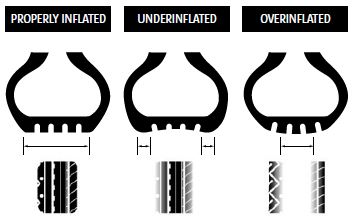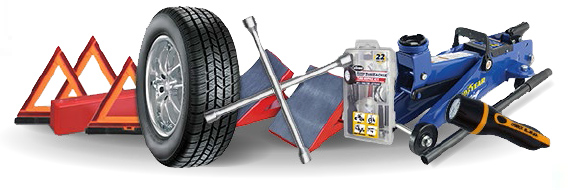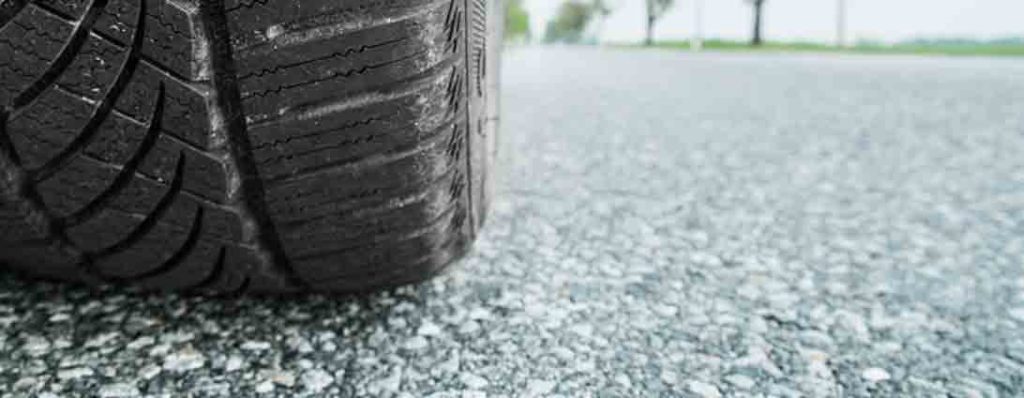Tire Maintenance:
Did you know that you are not insured when driving on illegal tires? If you are involved in an accident and it turns out that you have been driving around on tires with a tread depth lower than 1.6mm (legal limit in the UK) you could find yourself forking out a lot of money on repairs and fines.
Worn ti res significantly impede the performance of your car – low tread depths reduce the effectiveness of braking, steering, and acceleration, all of which are vital in staying safe. What are a few minutes put aside now to check your tires, when you compare it to your own safety and that of your family?
What Should I Check?
The Tire Safe org has devised a five point tire check that we strongly recommend you complete:
- Check overall condition of tires, including inner and outer sidewalls.
![]()
- Check tire tread depth.
- Check all tire pressures.
- Check signs of irregular wear.
- Check and examine the spare tire.
Correct Inflation Pressure
Correct inflation pressure is important, as the pressurized air inside your tire has to support the weight of your vehicle and its load. Inflation pressure can also affect your vehicle’s fuel efficiency. Tyre pressures vary depending on the vehicle model and the load being carried.
We recommend that you go to your local service station and check your tire pressures regularly against the manufacturer’s specifications for your vehicle. You’ll find the inflation specifications in your vehicle owner’s handbook. The following illustrations demonstrate how the effects of correct and incorrect inflation pressure can be seen on your tire tread pattern.

Figure-8
Wheel Alignment & Balancing
You may hear the terms ‘wheel alignment’ and ‘wheel balancing’ used interchangeably, but they are separate issues, both important in the upkeep of your tires and vehicle. Wheel alignment consists of adjusting the angles of the wheels so that they are perpendicular to the ground and parallel to each other. Aligning your wheels can help maximize tire life and ensure that your vehicle drives straight and true when on level surfaces.
The effects of tire misalignment may be detected by either of the following:
- uneven or rapid tire wear
- when driving on a straight flat road the driver can feel the steering wheel
pulling to one side (having to exert a slight extra force to keep the vehicle driving in a straight line).
Wheel balancing![]()
Allows the tires and wheels to spin without causing any vibrations. Your wheels’ balance is gauged by checking for any heavy spots on the wheel-tire combination and compensating for such flaws by placing a measured balancing weight on the opposite side of the wheel from where the heavy spot is located.
The symptoms of a wheel that is out of balance include:
- vibration in the steering wheel, seat or floor-pan, usually at motorway speeds
- scalloped’ or ‘cupped’ wear pattern on the tires
If your tires demonstrate any of the symptoms outlined above, we advise that you seek advice from your local authorized tire repair center.
Diameter Is Key
Why is the diameter so important? It is because speedometers, traction control, torque and the gear settings of a car are based on how far the tire travels in a full revolution. This is linked to the outside diameter.
If the size is too different this affects the time/length it takes for a full tire revolution (the tire rolling circumference), which will cause your speedometer to display incorrect readings and your gearing will be adversely affected.
So, when changing the size of wheel and tire fitted to your car, it needs to be the same overall diameter as what the car was designed to work with.Unfortunately it isn’t immediately easy to work out the outside diameter when changing tire sizes as tire sizes are measured using the inside diameter.
On a tire, the outside diameter is determined by the sidewall and is more commonly referred to as the aspect height.
Understanding Tire Size Math:
This is where it gets a bit more complicated.
The aspect height of a tire is shown in the tire size as a percentage of the width – the aspect ratio.
 Let’s take the tire size 205/55/16 for example. 205 is the width of the tire in millimeters – fairly straight forward. However, the 55 is the ratio of the tire’s width to the tire’s height.
Let’s take the tire size 205/55/16 for example. 205 is the width of the tire in millimeters – fairly straight forward. However, the 55 is the ratio of the tire’s width to the tire’s height.
So it means that the aspect ratio is 55% of the 205mm width. In this instance that is 112.75mm.
At this point you will need to convert the size from millimeters to inches – there are 25.4 mm in every inch.
To find out what the standing height is, you need to double the aspect height, (top and bottom of the sidewall) and then add on inside diameter – in this case 16”. So, in our example, the standing height will be 24.88 inches.
Now, that you have the standing height of the old tire, you can work out which new tire size will also work on your car –as the standing height will need to be the same.
Maths Summary:
- Multiply a tire’s width by the aspect ratio to get aspect height (205 x 0.55 = 112.75)
- Convert into inches (112.75 / 25.4 = 4.44)
- Double the aspect height (4.44 x 2 = 8.88)
- Add inside diameter of tire (8.88 + 16 = 24.88)
When changing tire size, the tires should not have more than a 1% difference in diameter – less than 0.5% would be ideal.
Tire Speed Rating
 The speed rating of a tire is displayed on the sidewall. Like in the image, you will find it at the end of the tire’s size. It is always represented by a letter – in the following example the tire speed rating is “W”.
The speed rating of a tire is displayed on the sidewall. Like in the image, you will find it at the end of the tire’s size. It is always represented by a letter – in the following example the tire speed rating is “W”.
Once you know your tire speed rating, you can work out what is the maximum speed your tire is capable of maintaining.
For example, the “W” rating seen in the image, tells us that this tire can reach speeds of up to 168mph.
Speed ratings are based on tests in which engineers run the tire at 6.2 mph steps, in 10 minute increments, until the required speed has been met.



 It was in 1845 that the pneumatic or air-filled tire – which works by air within the tire absorbing the shocks of the road – was invented and patented by RW Thomson. His design used a number of thin inflated tubes inside a leather cover (see illustrated). This meant that it would take more than one puncture before the tire deflated. However, despite this new breakthrough in tires, the old solid rubber variety was still favoured by the public, leaving the pneumatic tire out in the wilderness.
It was in 1845 that the pneumatic or air-filled tire – which works by air within the tire absorbing the shocks of the road – was invented and patented by RW Thomson. His design used a number of thin inflated tubes inside a leather cover (see illustrated). This meant that it would take more than one puncture before the tire deflated. However, despite this new breakthrough in tires, the old solid rubber variety was still favoured by the public, leaving the pneumatic tire out in the wilderness. In 1895 the pneumatic tire was first used on automobiles, by Andre and Edouard Michelin. It was also around this time that legislation was put into effect that discouraged the use of solid rubber tires. All over the world companies sprang up to meet the new demand for the new tires. The age of the pneumatic tire has begun!
In 1895 the pneumatic tire was first used on automobiles, by Andre and Edouard Michelin. It was also around this time that legislation was put into effect that discouraged the use of solid rubber tires. All over the world companies sprang up to meet the new demand for the new tires. The age of the pneumatic tire has begun! Let’s take the tire size 205/55/16 for example. 205 is the width of the tire in millimeters – fairly straight forward. However, the 55 is the ratio of the tire’s width to the tire’s height.
Let’s take the tire size 205/55/16 for example. 205 is the width of the tire in millimeters – fairly straight forward. However, the 55 is the ratio of the tire’s width to the tire’s height. The speed rating of a tire is displayed on the sidewall. Like in the image, you will find it at the end of the tire’s size. It is always represented by a letter – in the following example the tire speed rating is “W”.
The speed rating of a tire is displayed on the sidewall. Like in the image, you will find it at the end of the tire’s size. It is always represented by a letter – in the following example the tire speed rating is “W”. The rubber clip prevents the tyre rim cutting into your tyre when you experience a sudden loss of pressure. This system has been developed by Michelin and is known as the PAX System. Like the reinforced sidewall it operates in tandem with automated tyre pressure monitors.
The rubber clip prevents the tyre rim cutting into your tyre when you experience a sudden loss of pressure. This system has been developed by Michelin and is known as the PAX System. Like the reinforced sidewall it operates in tandem with automated tyre pressure monitors.
